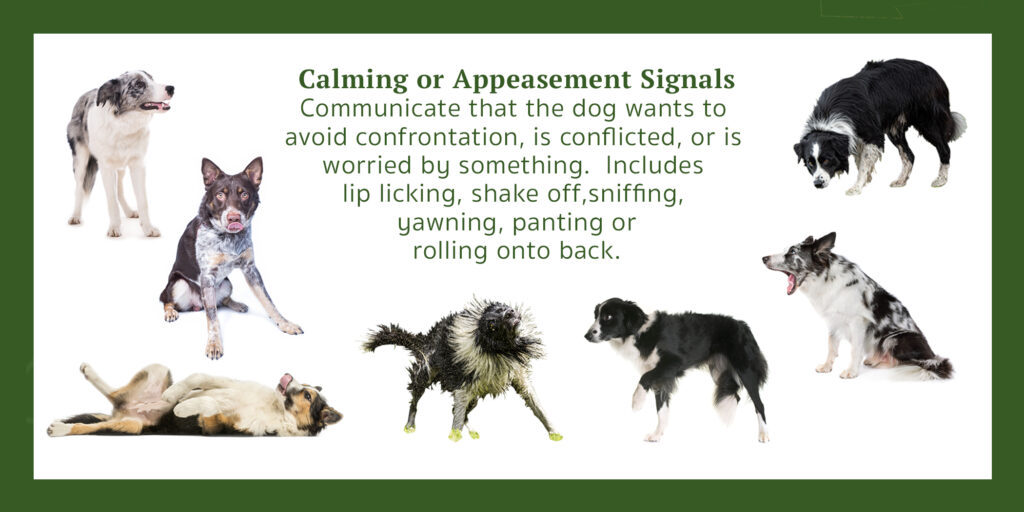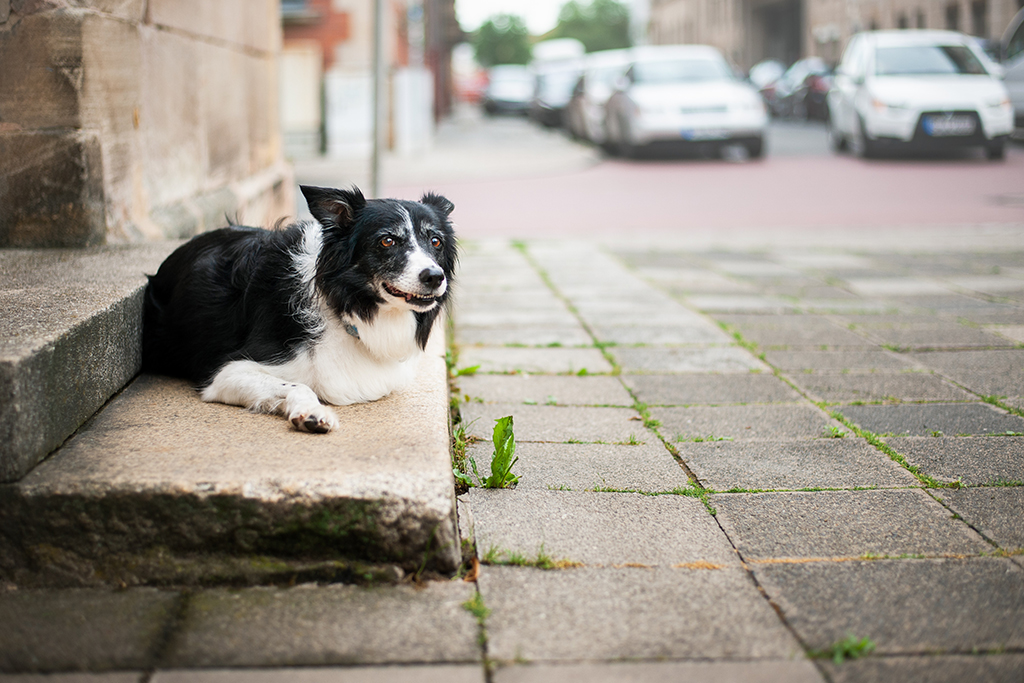
If your dog is refusing to get in the car, then the chances are that he is afraid of car travel for some reason. However, it’s important to rule out any other issues such as motion sickness or pain, so always ask your vet to check him over to rule these out. Dogs with certain painful conditions can often feel worse in the car due to the movement and going over bumps in the road etc. This is particularly likely if your dog has suddenly started to refuse to travel for no obvious reason but was fine before.
The following training plan was created for a young border collie (5 months old) who, over the period of his first few car rides, started to like going in the car less and less, despite there being no obvious reason for this. It got to the point where he was very wary of stepping outside the front door as he had to pass the car on the drive. This training plan may not be suitable for all dogs who are fearful of car travel – always check with a border collie behaviourist to make sure that any training you are considering implementing relating to a behaviour issue is right for your dog.
Desensitisation and counter conditioning
2 processes together called desensitisation and counter conditioning are the best, positive training when your dog is refusing to get in the car.
Desensitisation (DS) helps by gradually habituating the dog to different aspects of something that they are scared of, so that it becomes more familiar and less scary.
Counter conditioning (CC) changes the dog’s association with the trigger from something scary to something good.
Safe distances & body language
In order to carry out DS & CC effectively when a dog is refusing to get in the car, we first need to identify the distance at which the dog can be from the scary item at which he shows relatively little fear but is still aware of the item. The following images will help you to identify this distance.

Signs of anxiety include heavy panting, drooling, ears back, whale eye (where the dog looks at something out of the corner of his eye so that you can see the whites of his eyes), leaning away from the scary thing, body held low. These are all signs that you are definitely too close.

Dogs use calming signals when they are worried and it’s the first stage of feeling anxious. It’s the dog’s way of nicely telling us that they are in a position that they would rather not be in.
If you see any of these signs then you are still too close to the car, so move a little further away. Once you are in a place where the dog looks happier, doesn’t show any calming signals or anxiety, but is aware of the car, then this is your dog’s “safe distance” from the vehicle.
Determining your dog’s “safe distance”
Work through the process you would normally do when you go out in the car – so pick up the keys, put on your shoes etc, walk to the door, open the door, walk towards the car. The safe distance may be very early in the process, such as inside the house when you pick up the keys, or may be much later in the process. Don’t be tempted to skip any stages.
Training plan for when your dog is refusing to get in the car
I recommend two sessions of 10-15 minutes at different times of the day, but if you struggle to fit this in, one session will be fine. Work at the dog’s safe distance for that day – it may be the same distance as the time before, or you may be able to get a little closer.
In each session, determine the dog’s safe distance and work with the dog at that distance. You can just sit with him, help him to relax by stroking him and giving him treats or by playing with his favourite toys. You can do a bit of training with him, asking him to sit then giving him treats as rewards, do anything that he finds enjoyable. It might be sitting and hand feeding him his dinner. Usually REALLY high value treats (cheese or sausage) works best. If he’s not overly interested in the food, only carry out the training before feeding, when he’s quite hungry. Use a waterproof mat to sit on if it’s wet underfoot.
By observing the dog’s body language in this way, work through the following stages very slowly, at the dog’s pace, without him becoming anxious or worried at all:
1. Moving closer towards the vehicle
2. Opening the vehicle door
3. Putting his head inside the vehicle
4. Putting one paw inside the vehicle
5. Two paws
6. All four paws
7. Building up time inside the vehicle (up to half an hour with you reading a book)
8. Closing the door (a few cm more each day)
9. Actually shutting the door then opening it again
10. Building longer periods with door shut
11. Turning the engine on (and straight off again)
12. Turning engine on for gradually longer but not going anywhere
13. Reversing out of drive and driving straight back in again
14. Going for progressively longer journeys
Conditioning the dog’s association with starting the engine
Whilst carrying out this training, but in a completely separate session each day, start to work on conditioning the starting of the car engine as a predictor of a reward. So have someone in the car, have the dog inside the house with the front door open, or nearer if he’s happy with nearer, and every time the person starts the engine, drop a pile (about 10) of really tasty treats on the ground. Then turn the engine off before he’s finished the treats. Do this as often as possible, ideally every day, just for 2 or 3 engine starts. Using the same principles as above, you should be able to gradually increase proximity to the car while you’re doing this, ensuring that the dog is always relaxed and happy. This will help to stop your dog from panicking when he is in the car and you turn the engine on for the first time.
Timescales
There is no set time taken for this process, but if your dog doesn’t have an established long history of fearing the car, I would expect it to take 6 – 8 weeks, just to give you an idea of timescale. That’s with carrying out the training twice a day for 15 minutes, as well as carrying out the engine conditioning. Obviously, if you train for fewer times a day, it will take longer. If your dog that has been refusing to get in the car for a few years then it will take longer – maybe up to 6 months. Try and make some progression closer to the car every couple of days, even if only a few inches!
Emergency travel
It’s important that you don’t take your dog out in the car at all during this time. If you need to for any reason, then speak to your vet to see if they can prescribe a medication that the dog can take to reduce anxiety. If they are reluctant to do so (they might need to see him first), then try and have someone go with you to sit with him in the back, just to help him to relax a bit and make things less scary. It will set back the training but in an emergency, you might need to transport him and we will just need to take a few steps back with the training.
Adaptil
We’ve had a lot of success using Adaptil, a natural pheromone that helps to calm the dog. I would recommend getting your dog a bandana and familiarising him with it, so that he isn’t afraid of it at all (by pairing the bandana with nice things such as treats or play). Once he is familiar with it, use it every time you carry out car training, and spray it with Adaptil. This will enhance the training. Once he is progressing to inside the car, you can spray his bedding with it.
Freshly spray the bandana/car bedding ten minutes before the training starts. It needs to be reapplied each time.
No Punishment
Ensure that no punishment of any kind happens anywhere in the vicinity of the car, as this will make things worse. The car needs to be associated with only good things.
Destinations
Once you progress to making short journeys in the car, ensure that you travel to many pleasurable destinations – not just the vet or the groomers. Tell your dog where you’re going. Over time, he will learn what you are saying and it will make journeys in general less stressful – instead of worrying he is going somewhere unpleasant on every journey, he will only need to worry on journeys where he knows he is going somewhere he doesn’t like so much.
Homecomings
Use homecomings to get the dog used to vehicles – let him out of the house when someone returns and invite them into the car to greet the owner, but don’t push this to start with – just let him greet them at his own distance. Don’t try to lure him closer. You will find that over time his confidence will increase and he’ll greet people closer and closer to the car.
Car Exploration
Allow him to move about the car and investigate it while stationary – don’t confine him to one part of the vehicle once he starts relaxing inside the car.
Teach “Jump” or “In”
It’s also a good idea to teach him to jump onto surfaces away from the vehicle. So, for instance, do fun training where you get him to jump on and off the settee, or onto an outside table or wall, so that he learns a cue to jump in. You can then introduce this to the car when you’re at that stage and make it fun for him.
Motion Sickness
If, after carrying out all of this training, your dog starts to fear the car again when you start making journeys, then he will need to be vet checked to rule out pain (the movement of the car can cause pain in some conditions) and also to see if the vet can prescribe something for motion sickness.
If motion sickness is suspected, try and provide a smoother, slower driving experience. No rapid acceleration, sudden braking, sharp turns, bumpy rides or winding roads.
Giving your dog better visual orientation – access to windows can help with travel sickness and ensure that the car is cool and well ventilated.
Avoid feeding prior to travel.
If you have any questions, please don’t hesitate to contact me on:
collieconsultant@gmail.com
07931 409307

